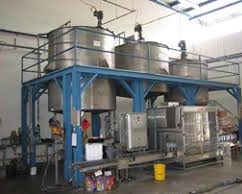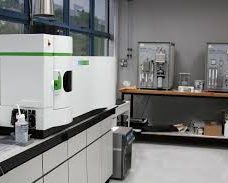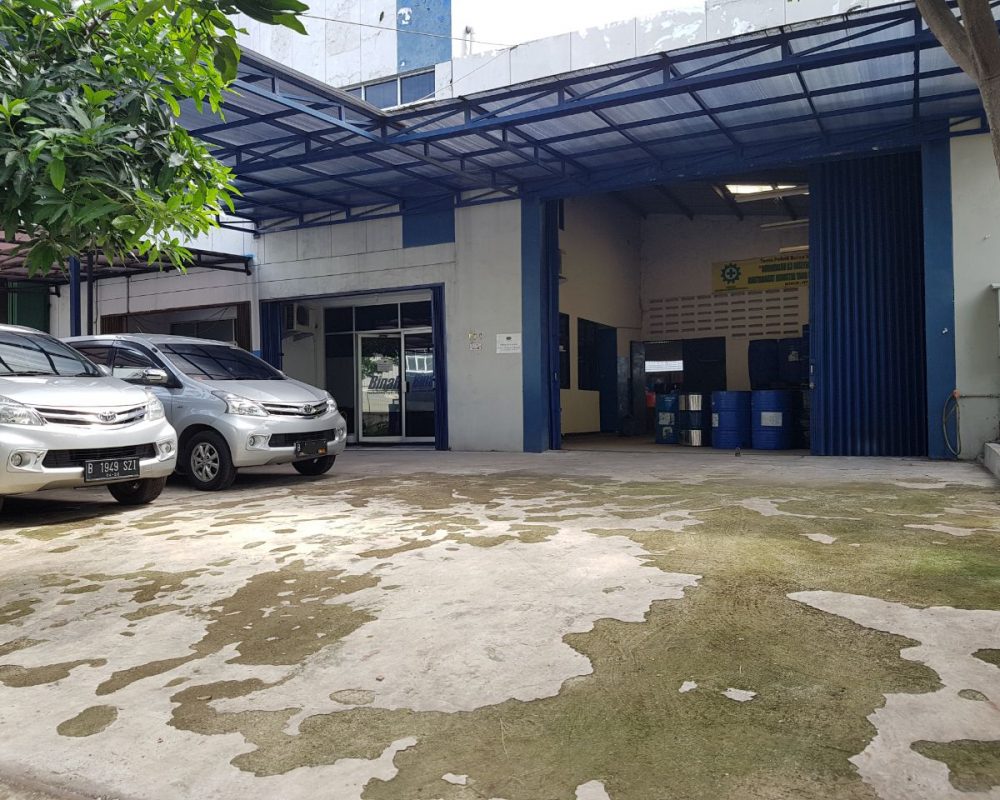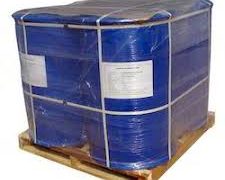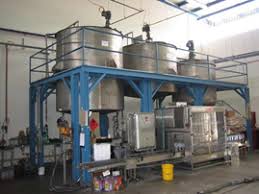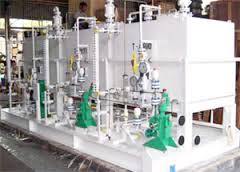BINAR 8010
Oxygen scavenger BINAR 8010 is a bisulphite derivative. BINAR 8010 inhibits oxygen in the pipeline carrying the sea/ injection water. Free oxygen causes severe corrosion resulting into choking of the pipeline. BINAR 8010 reacts with the free oxygen stoichiometrically thereby arresting the dissolved oxygen.
GENERAL CHARACETRISTICS
Form : Clear Liquid
Color : Colorless
Solubility : Soluble in water
Specific Gravity : 1.10 – 1.20
pH : 3.0 – 5.0
Viscosity : <20 cSt
HANDLING & SAFETY
Avoid contact with eyes, cut skin and clothing. In case of contact with eyes, immediately flush with water for 15 minutes and seek medical aid. Wash skin immediately if there is any contact and remove contaminated clothing. Store in cool and closed condition.
DOSAGE
BINAR 8020 has a very low viscosity and can be used as delivered. The exact dosage recommendation depends upon the type of system and more specifically
upon the oxygen content in water.
PACKING
200 liters in HDPE drums.
SHELF LIFE
BINAR 8010 has a storage life of 6 months if stored in the closed containers.
===========================================================
INFORMATION

Oxygen scavengers or oxygen absorbers are added to enclosed packaging to help remove or decrease the level of oxygen in the package. They are used to help maintain product safety and extend shelf life. There are many types of oxygen absorbers available to cover a wide array of applications.
The components of an oxygen absorber vary according to intended use, the water activity of the product being preserved, and other factors. Often the oxygen absorber or scavenger is enclosed in a porous sachet or packet but it can also be part of packaging films and structures. Others are part of a polymer structure.
The first patent for an oxygen scavenger used an alkaline solution of pyrogallic acid in an air-tight vessel.
When an oxygen absorber is removed from its protective packaging, the moisture in the surrounding atmosphere begins to permeate into the iron particles inside of the absorber sachet. Moisture activates the iron, and it oxidizes to form iron oxide. Typically, there must be at least 65% relative humidity in the surrounding atmosphere before the rusting process can begin. To assist in the process of oxidation, sodium chloride is added to the mixture, acting as a catalyst or activator, causing the iron powder to be able to oxidize even with relative low humidity. As oxygen is consumed to form iron oxide the level of oxygen in the surrounding atmosphere is reduced. Absorber technology of this type may reduce the oxygen level in the surrounding atmosphere to below 0.01%.Complete oxidation of 1 g of iron can remove 300 cm3 of oxygen in standard conditions. Though other technologies can remove more, iron is the most useful as it does not cause odor like sulfur compounds or passive like aluminium compounds. Many other alternatives are not food safe. The moisture requirement of iron-based scavengers makes them ineffective in moisture sensitive applications.
The performance of oxygen scavengers is affected by ambient temperature and relative humidity. Newer packaging technologies may use oxygen scavenging polymers to prevent accidental ingestion of oxygen scavengers.
Oxygen Scavenger mean?
An oxygen scavenger is a chemical substance that is used to reduce or completely remove oxygen in fluids and enclosed spaces to prevent oxygen-induced corrosion. It is also known as an oxygen absorber. It is used as a corrosion inhibitor in oil and gas production installations, packaging, production separation and seawater injection systems. Oxygen scavengers increase the shelf life or service life of the components under protection. Oxygen scavengers are categorized as organic or inorganic. They are applied in various ways, depending on:
- The amount of oxygen to be removed
- The expense commitment
- Characteristics and field conditions
- Ability to passivate metallic surface
Oxygen Scavenger
An oxygen scavenger is a corrosion-inhibiting substance that is added in small amounts to an environment that is prone to oxygen-based corrosion. Its cathodic nature enables it to combine with oxygen and form harmless compounds-salts. This process eventually reduces the corrosion rate in the systems under protection.
The oxygen scavengers are formed from:
- Metal (iron) sulfites and bisulfite ions
- Homogenous blends of reactive substances and polymers
- Ascorbic acid
- Ascorbate salts or catechol
- Photosensitive dye
- Antioxidants
- UV light activation
- Aerobic microorganisms and enzymes
The oxygen scavenger has had numerous accounts of patents, especially in the food and packaging industries. They are designed on the basis of the nature of the substance to be protected against corrosion, the desired shelf life, and the corrosion activity. These corrosion inhibitors are designed to satisfy the following requirements:
- They should be harmless to humans
- They should absorb a large amount of oxygen at an appropriate rate
- They should not produce toxic substances that might increase the rate of corrosion
- They should be efficient and compact in size or amount
- It should be able to with stand extreme pressures and temperatures


